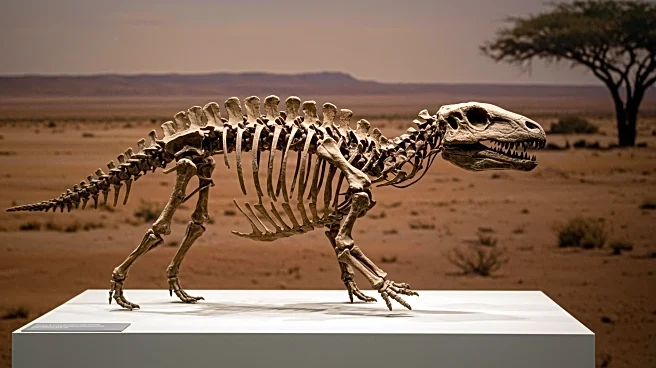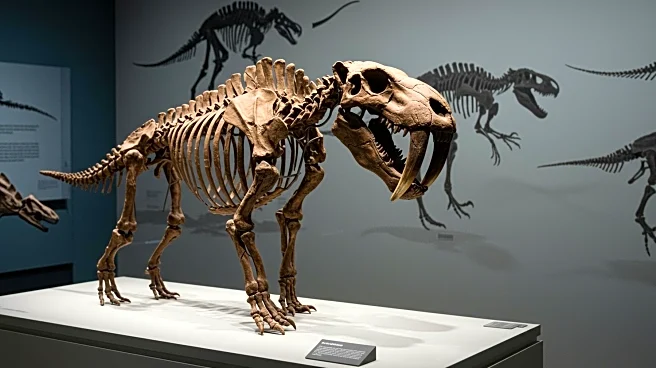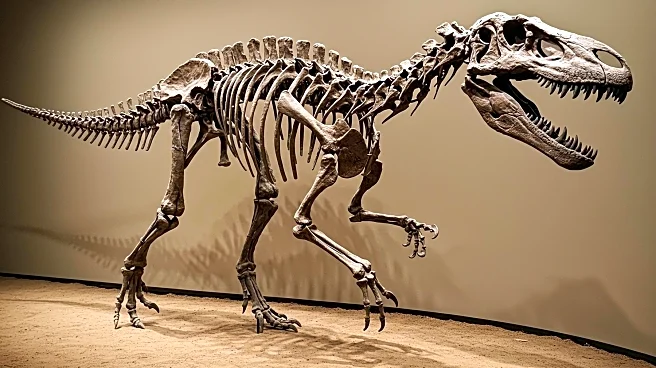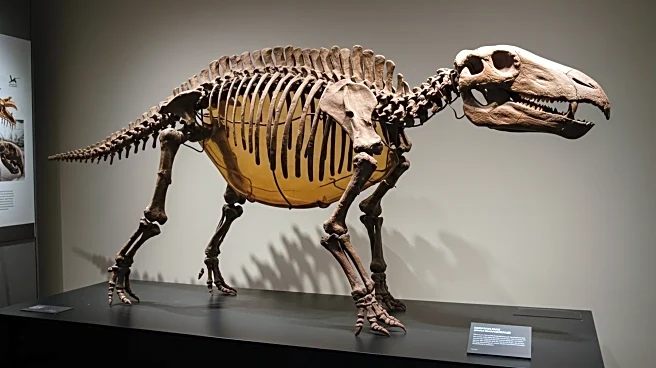Rapid Read • 7 min read
On August 12, 1990, fossil collector Sue Hendrickson discovered one of the largest and best-preserved Tyrannosaurus Rex skeletons, nicknamed 'Sue,' in South Dakota. The skeleton is now displayed at Chicago's Field Museum, providing invaluable insights into the anatomy and life of T. rex. Sue's discovery marked a significant advancement in paleontology, offering a comprehensive view of the species' physical characteristics and contributing to scientific understanding of dinosaur evolution.
AD
Sue's discovery is crucial for paleontology as it provides one of the most complete T. rex specimens, allowing scientists to study its anatomy in detail. This has led to advancements in understanding the biology, behavior, and ecology of T. rex, influencing theories about its role as a predator and its interactions with other species. The find has also enhanced public interest in dinosaurs, contributing to educational and museum exhibits that engage audiences worldwide.
The continued study of Sue's skeleton may lead to new insights into T. rex's growth patterns, health, and environmental adaptations. Researchers may use advanced technologies to analyze the fossil further, potentially uncovering new information about its life history. The discovery also encourages ongoing paleontological exploration to find more complete dinosaur specimens, enhancing scientific knowledge of prehistoric life.
Sue's discovery highlights the importance of fossil preservation and the role of private collectors in contributing to scientific research. It underscores the ethical considerations in fossil collection and the need for collaboration between private collectors and scientific institutions to ensure fossils are studied and displayed responsibly.
AD
More Stories You Might Enjoy










